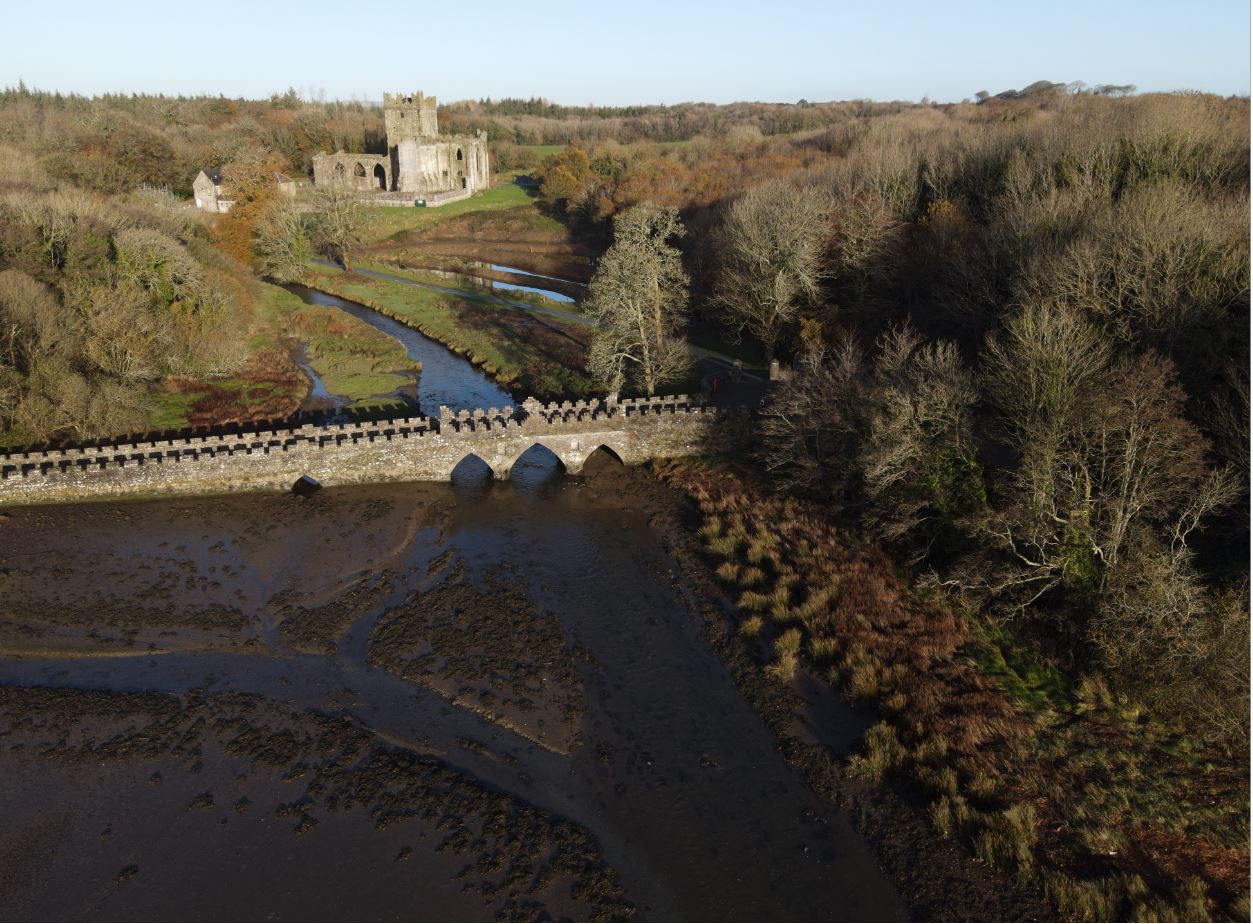1200 - arrival of the Marshal
Isabel de Clare, daughter of Richard de Clare
(Strongbow) and Aoife Mac Murchadha, was probably born between 1172 and 1175. On her mother’s side, Isabel was the granddaughter of Diarmaid Mac Murchadha. Following the death of her brother Gilbert in 1185, Isabel became the sole heir of her father’s vast estate, which included land not just in Ireland, but also England, France and Wales. As such, king Henry II would have the final say in who Isabel would marry. The man he chose as her husband was William Marshal, the grandson of Gilbert, marshal of King Henry I. In his youth, William Marshal trained as a knight and excelled on the tournament circuit in France and the Rhineland, and by 1167 he was taken under the wing of Henry II. As a token of his appreciation, king Henry II granted him permission to marry Isabel de Clare. The wedding took place in August 1189, and through his new wife’s inheritance, William became one of the wealthiest men of his time. It was some years before William would visit Ireland, but we know that he took an active interest in his newly acquired Irish lands from a distance. For example, around 1192 he appointed his close friend Geoffrey fitzRobert as the administrator of his lands in Leinster. In 1189, the same year that William and Isabel were married, Geoffrey himself had married Basilia, the widow of Raymond le Gros
who had arrived in Ireland in 1170 and led the attack on Dublin that year. Basilia was also the sister of Strongbow, and, therefore, Isabel’s aunt. These marriages reflect more than close family ties, they reveal a lot about how land ownership and inheritance was carefully managed through family alliances.
Henry II died only a month before William and Isabel were married. He was succeeded to the English throne by his son Richard, while his younger brother John continued to hold the title Lord of Ireland. King Richard may have been happy with the marriage of William and Isabel, but his brother John was not. After the death of Isabel’s father, Strongbow, Lord John had retained his lands in Leinster, and he was now reluctant to let them back to the rightful heir. It took three years for William Marshal to finally gain control of his wife’s Irish lands, but the result was a difficult relationship between these two men, which would become a major problem for William after John became king of England in 1199. The coronation of John as king may have prompted Marshal and Isabel to take firmer control of their Irish estates. In September 1200, Isabel and William, now earl of Pembroke, arrived in Ireland for the first time and their initial impression was a dramatic one. It is said that their ship was caught in a storm as they neared the Wexford coastline. William vowed to establish a monastery at the place where his ship landed. They succeeded in reaching the calm waters of Bannow Bay, close to where the Normans had first set foot on Irish soil in 1169. True to his word, William founded an abbey that would be colonised by Cistercian monks from Tintern Abbey in William’s home manor in Monmouthshire, the first Cistercian Abbey in Wales. To differentiate the Irish abbey from its Welsh mother-house, the Wexford foundation became known as Tintern Minor, and was sometimes called Tintern de Voto, from the Latin word for ‘vow’.
William only stayed in Ireland until December that year, when he was recalled by the king on business in England and Normandy. Over the following years William kept a close eye on his Irish lands from a distance, but shortly before Easter 1207 he returned to Ireland in order finish the work that he had started seven years earlier. In particular, he established the town of Kilkenny, which would become one of the greatest towns in medieval Ireland. He also issued a charter of incorporation for New Ross, near the confluence of the Barrow and Nore rivers. In so doing, he created an independent port to serve his Leinster lands, and cleverly avoided having to depend on the nearby royal port of Waterford.
Marshal also had a more pressing reason to return in 1207. While he had been absent, the king’s justiciar in Ireland had been gradually taking over some of Marshal’s Irish lands. The man in question was Meiler fitzHenry, who was a grandson of King Henry I. In 1169 Meiler had arrived at Bannow Bay with his uncle Robert fitzStephen, and by 1207 was one of the last surviving veterans of the initial Anglo-Norman campaign in Ireland. One of John’s first acts when he took the throne of England in 1169 was to appoint his cousin Meiler as his justiciar in Ireland, making him the crown’s top civil servant in the country. Since the invasion, Meiler held various lands in the Lordship of Leinster as a gift of Strongbow. Now that William Marshal inherited the Lordship of Leinster, as a tenant of Marshal, fitzHenry should have been answerable in the first instance to his lord. Instead, Meiler decided to by-pass William and use his new royal appointment to answer only to the king. Indeed, the king was entirely complicit in undermining Marshal’s position in Leinster for many years and without any consultation had already granted his lands in Laois to Meiler, where he had started construction of the majestic Dunamase Castle.
Now that Marshal was back on Irish soil, a bitter and violent dispute broke out between the two men. In an attempt to resolve the situation, the king summoned both Marshal and fitzHenry to appear before him in October that year. No sooner had the two men left Ireland, fitzHenry’s followers attacked Marshal’s port town of New Ross. The following January, the mischievous king allowed Meiler fitzHenry to return to Ireland but ordered William Marshal to stay in England. During this time, Isabel, who was pregnant, had remained in Ireland, where she had taken up residence at Kilkenny castle. Meiler reputedly laid siege to the castle, but legend has it that she secretly had a man lowered from the battlements to take the news of the siege to her followers. The ploy worked, and with the assistance of the sons of Hugh de Lacy, the siege was lifted. Meiler was humiliated, and the king also capitulated by restoring William Marshal to his Irish lands in March 1208, including Dunamase castle and the lands in Laois that the king had given to Meiler. However, William Marshal soon found himself once again in conflict with the king. This was the result of a separate dispute that the king had with the sons of Hugh de Lacy; a dispute that would soon bring John to Ireland for a second time.


